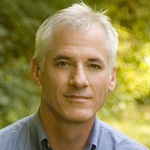In Sync
Connecting government's radical thinkers.
Are you invigorated by institutional inertia? Does the specter of failure rev your engine? Do you take satisfaction in rousing the bureaucratic beast?
If the answer is "yes," you might be a government change agent. And you are not alone.
A new crop of visionary thinkers has emerged in government, according to Daniel P. Forrester, director of government services at Sapient Corp. in Cambridge, Mass. In his recent report, "The Government's New Breed of Change Agents: Leading the War on Terror," Forrester posits that wars provide crucibles for forging creative solutions to seemingly intractable problems. The Cold War forced a "deeper collaboration and connectivity" between government and academia that resulted in the "dawn of the Internet," he says. "The war on terror should be ripe ground for similar innovation."
The challenge and the opportunity of the war are the "reorganization and realignment of people inside massive bureaucracies in order to be more agile in a war that requires it," he says. "You can't wave a wand with redundant business processes and expect them to change overnight."
Any doubts about the necessity for change, Forrester says, were dispelled last year by the government's response to the Hurricane Katrina disaster, which underscored the lack of emergency preparedness. Communications, planning, leadership, logistics and rapid mobilization were exposed as wanting.
Now visionaries from myriad federal agencies are coming together online to share best practices. One such meeting place is GovernmentChangeAgents.com, which Sapient launched in February. The Web log, or blog, has featured insights from experts such as Thomas P.M. Barnett, former professor at the Naval War College and best-selling author of The Pentagon's New Map: War and Peace in the Twenty-First Century (Putnam, 2004); Charlie Allen, chief intelligence officer at the Homeland Security Department's Office of Intelligence and Analysis; Tom Ridge, DHS' first secretary; and the late Vice Adm. Arthur Cebrowski, the Defense Department's Office of Force Transformation director who coined the phrase "network-centric warfare."
The unique DNA of change agents, Forrester says, provides them with essential character traits such as self-confidence, a sense of service, and the ability to build relationships and communicate effectively. "Charlie Allen [at DHS] thinks of change agents as people who aren't afraid to break some china," he says.
Twenty-four such change agents featured in Forrester's report include Deborah Diaz, chief information officer of the Homeland Security Department's Science and Technology Directorate, whose reputation for breaking down barriers and delivering mission-critical solutions goes back to her role in creating the General Services Administration's FirstGov portal; Priscilla Guthrie, deputy chief information officer at the Office of the Assistant Secretary of Defense for Networks and Information Integration, who works on the Global Information Grid-Bandwidth Expansion program to ensure information sharing within and beyond the Defense Department; and Lynn Torres, former director of the Office of Naval Research's Industrial and Corporate programs, who worked to conceptualize and field logistics systems that support warfighters.
The change agents cited by Forrester attribute their success to six key management practices: challenging the status quo; framing clear, compelling visions; focusing on new outcomes instead of new processes; realigning and leading within the bureaucracy; uncovering the right talent; and listening intently.
In the course of his research, Forrester discovered a hierarchy of four distinct types of change agents in the federal bureaucracy:
- Transformational leaders are the senior-most government officials, often political appointees, who "create visions for their organizations that are fundamentally different from what they inherited." Such leaders often have short tenures, Forrester says.
- Over-authorized senior directors are the line managers of transformation, Forrester says. They are given broad latitude to get the job done and are most effective when they believe their bosses will support them even in the face of extreme criticism.
- Functional mavens are the subject matter experts. They see their operational areas in the context of their leaders' visions.
- Dogged conceptualizers ask the most questions and persistently challenge the status quo. Many are visual thinkers who can distill a transformative idea onto a single sheet of paper.
When conditions are right, people from the four groups "cluster together in a sort of chemical interaction that can bring about profound change," says Forrester, who hopes the new Web site will rally a community of change agents. A proto-typical convergence was the Office of Force Transformation, a Pentagon think tank that was first led by Cebrowski. He and his team advanced the concept of "network-centric warfare," which seeks to coordinate otherwise disparate components of military force through advanced communications networks.
Indicative of their iconoclastic world view, change agents rarely agree on the term that describes them, but Forrester offers up his own definition: "A forward-thinking and -acting person who is able to deliberately and tangibly impact the mission and organizational direction of a bureaucracy from its status quo into an integrated, future state capable of contemplating and ultimately thwarting security threats, including natural hazards that might befall the United States of America."
The more things change, the more they stay the same.
NEXT STORY: Bidding Wars







